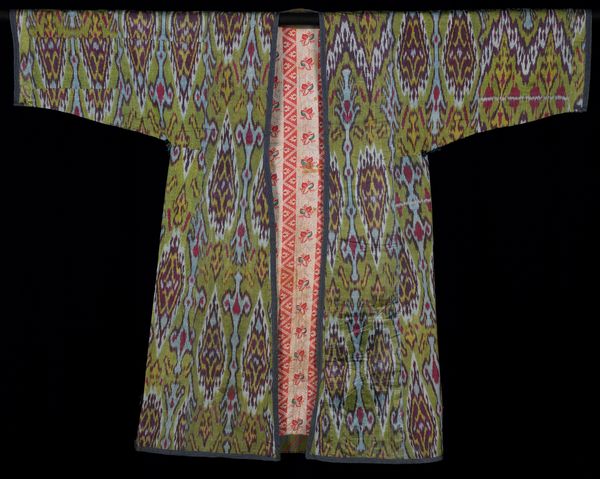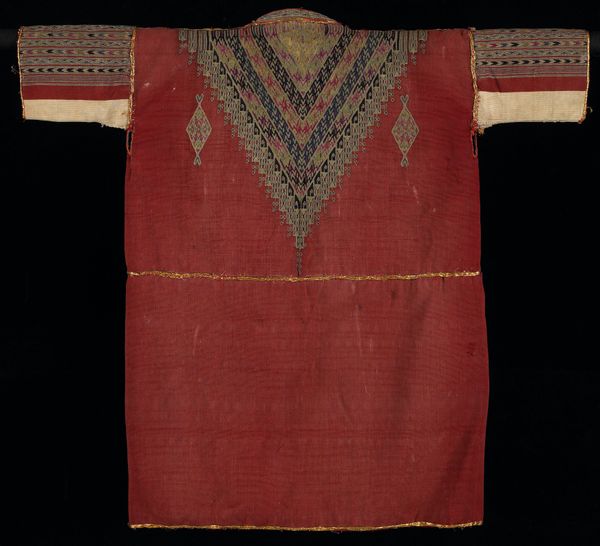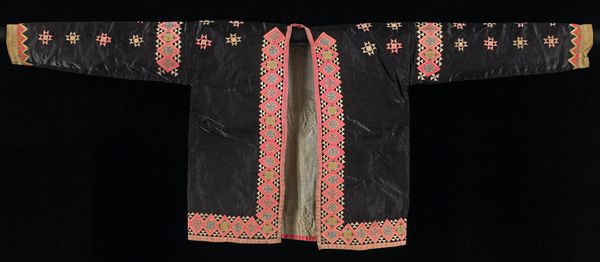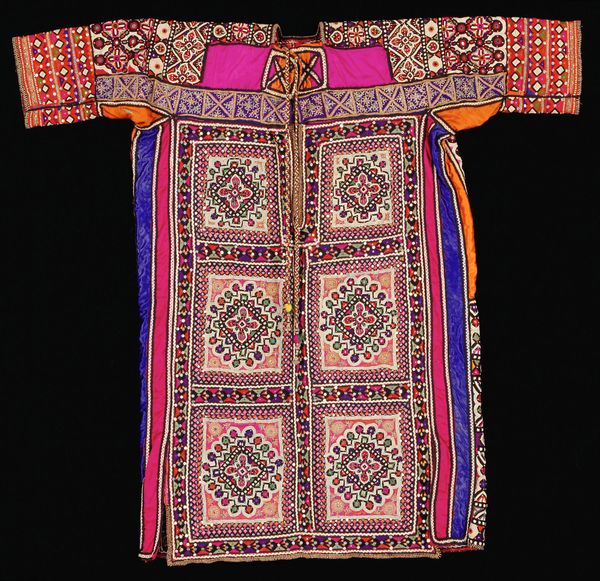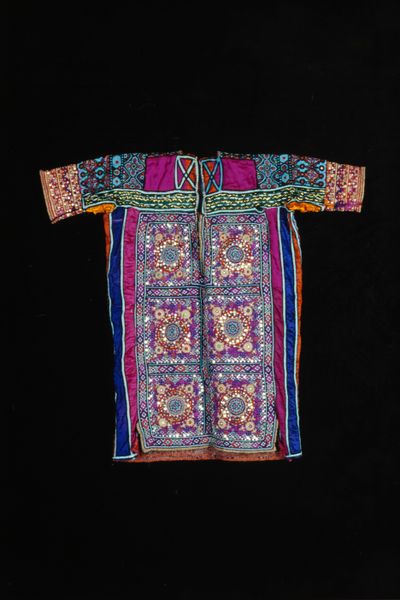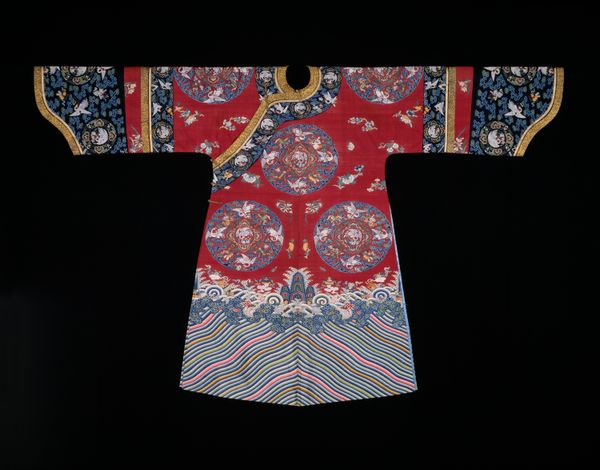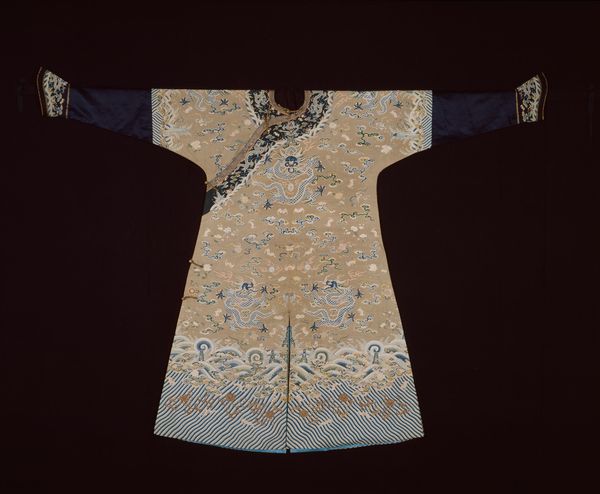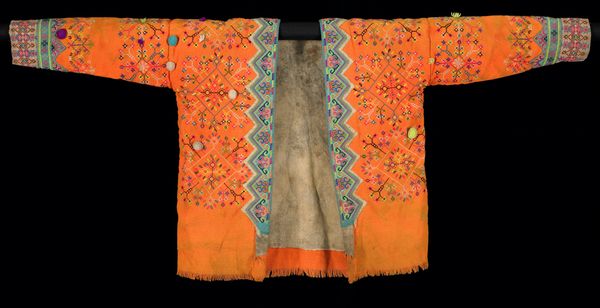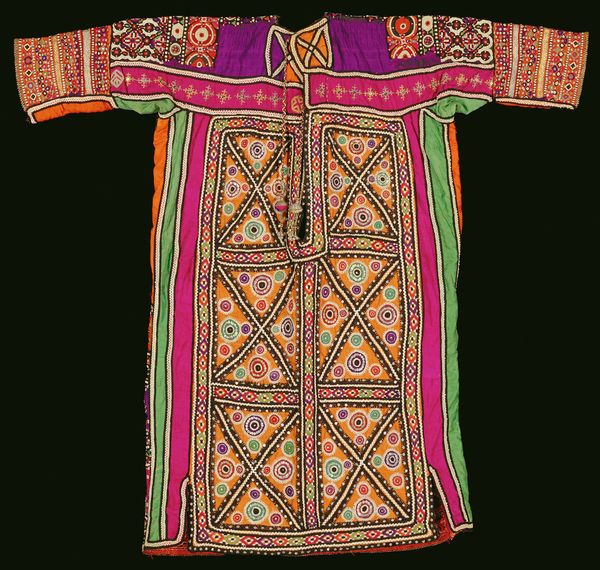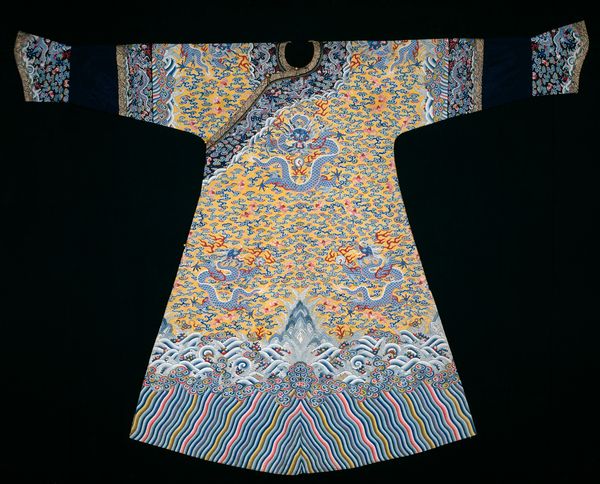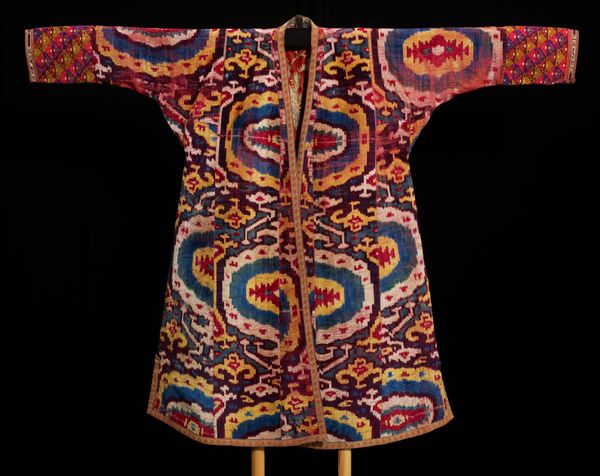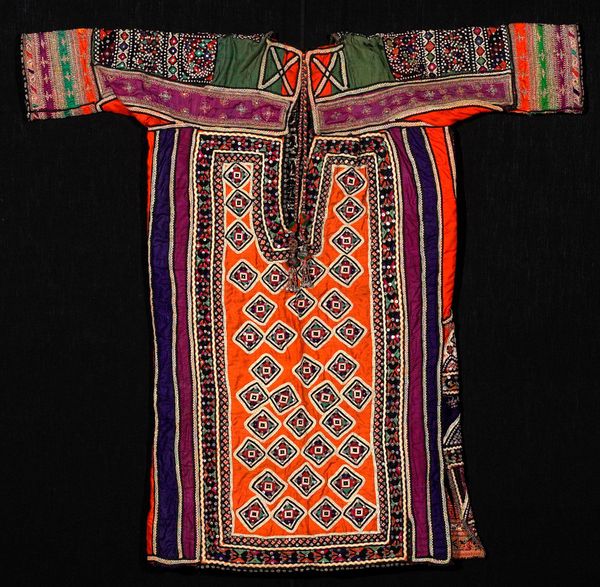
fibre-art, textile
#
pattern heavy
#
fibre-art
#
asian-art
#
textile
#
collage layering style
#
fashion and textile design
#
hand-embroidered
#
geometric
#
fabric design
#
repetition of pattern
#
pattern repetition
#
textile design
#
decorative-art
#
imprinted textile
#
layered pattern
Dimensions: 23 3/4 x 40 1/2 in. (60.33 x 102.87 cm)
Copyright: Public Domain
Editor: Here we have a "Boy's Jacket" from around the mid-20th century, currently held at the Minneapolis Institute of Art. It's made with a fascinating mix of materials - wool, cotton, and silk textiles that just scream "pattern!" It feels like a celebration of color and craft. What catches your eye in terms of materials and their use? Curator: The immediate impression is of labor. Consider the intensive, likely hand-made, production required. The juxtaposition of everyday materials like cotton with more luxurious ones, such as silk, disrupts traditional notions of high art versus craft. How does this blend speak to ideas about the cultural value of textiles? Editor: That’s an interesting point. The blending of materials and techniques challenges conventional ideas about what "art" even *is*, right? Especially the repetition of pattern in the embroidery. Curator: Precisely. Think about the social context – who produced this? For what purpose? Was this piece purely decorative, or did it serve a practical function, imbued with cultural significance beyond mere utility? The worn appearance suggests use, pointing towards a lived experience intertwined with the garment itself. Does this shift your perspective on its value? Editor: It definitely makes me see it as more than just a pretty jacket; it’s a document of labor, culture, and maybe even resistance to the separation of art from daily life. Curator: Exactly. By analyzing the jacket’s materiality and production, we move beyond aesthetic appreciation, engaging with broader social and economic narratives embedded within the object. We start thinking about consumption and value creation, don’t we? Editor: I see the value in considering this textile as part of the larger history of materials and labor rather than just something pretty to look at. Curator: Indeed, and it invites us to question the established hierarchies in art history that have historically privileged painting and sculpture over textiles and other forms of craft. Editor: I hadn’t thought about it that way before. Thanks for expanding my perspective! Curator: My pleasure. There's always so much to unravel in the threads of our material culture.
Comments
No comments
Be the first to comment and join the conversation on the ultimate creative platform.


